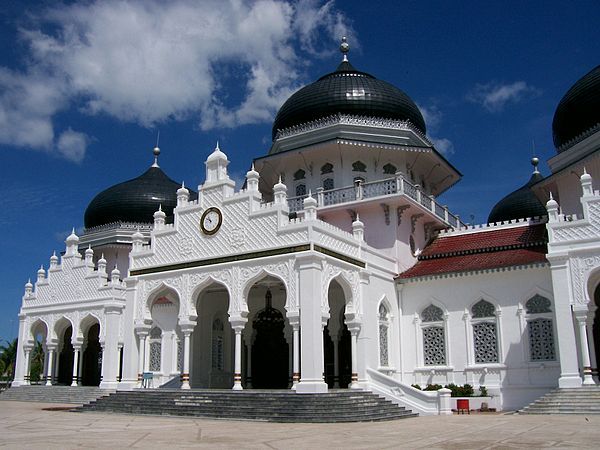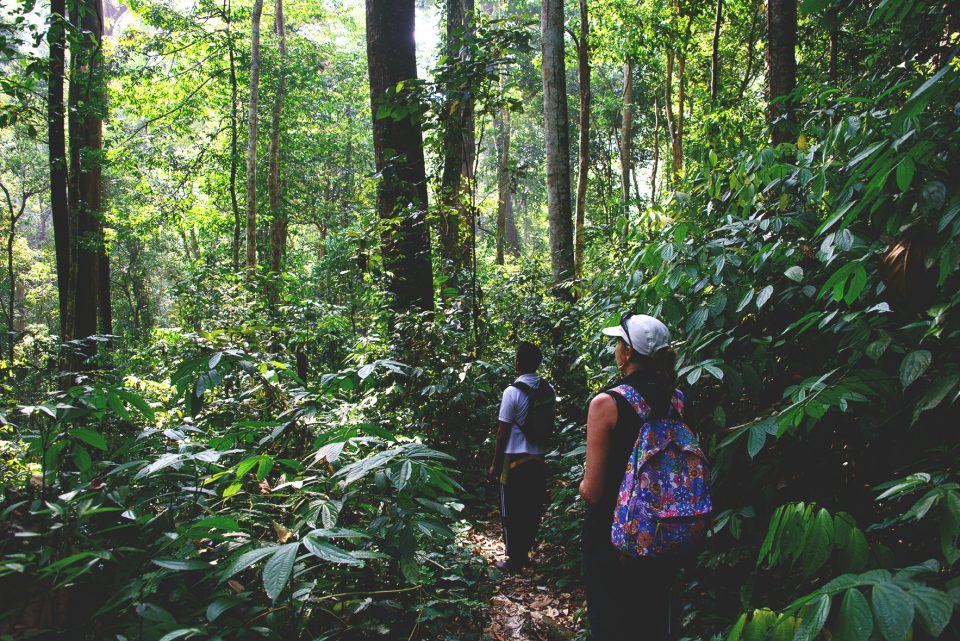Banda Aceh is the capital of the Aceh province of Sumatra, Indonesia. Although it’s a pretty interesting city, there aren’t many tourists that visit this place. Banda Aceh made headlines when it was badly hit by the 2004 tsunami. The city has since been rebuilt, but you can still see boats that were left here as a memorial, which is a very unusual sight. If you’d like to learn more about the tsunami and indulge yourself in the local culture, this is a place you’ll love to visit. Here are the top tourist attractions in Banda Aceh.
Contents
Top Tourist Attractions In Banda Aceh, Indonesia
The Tsunami Museum
Over 170,000 people in Aceh lost their lives as a result of the tsunami of 2004, and the Tsunami Museum in Banda Aceh acts both as a monument and an education center regarding the tragedy.
The museum has rolling footage of the tsunami and the aftermath, but one of the most gripping parts of the museum is the waterfall sections which aim to mimic how the towering waves would have felt.
These areas of the museum consist of dark corridors that drip with water, and as you move along you will be able to hear the sound of rushing waves all around you.
It is a powerful and very moving experience and is also one of Aceh’s most famous attractions.
Blang Kolam Waterfall
If you are Lhokseumawe in Aceh Province then consider taking a trip to Sidomulyo Village where you will find the Blang Kolam Waterfall.
Actually twin cataracts, the waterfall rises up over 75 meters and is surrounded by beautiful rainforest.
You can take a short trek out to the waterfall which will take you through lush rainforest with stunning scenery, and at the end of a sweaty hike you will be rewarded with the cool mist that comes off the gushing water.
Many people also choose to bring some camping gear and stay overnight as the setting is incredibly serene, so if you like communing with nature then get ready to set up camp in the middle of the forest.
The rainforest in Ketambe
One of the top tourist attractions in Banda Aceh, Gunung Leuser National Park starts in the province of North Sumatra and stretches all the way into Aceh.
Many people choose to visit the park via Bukit Lawang in Sumatra, but if you want a more secluded section of the rainforest away from the crowds then the best place to do this is in Ketambe in Aceh.
The park is made up of primary rainforest and is full of a plethora of flora and fauna including orangutans and monkeys.
There is a range of hikes that you can take from short day trips to longer treks that take several days and let you camp in the middle of the forest.
All that remains of Aceh’s powerful sultanates today is on view at Gunongan. Built by Sultan Iskandar Muda (1607–36) as a gift for his Malay princess wife, it was intended as a private playground and bathing place. The building consists of an intriguing series of blinding white peaks with narrow stairways and a walkway leading to ridges, which represent the hills of the princess’ native land. Ask around for someone to unlock the gate for you.
Directly across from the Gunongan is a low vaulted gate, in traditional Pintu Aceh style, which provided access to the sultan’s palace – supposedly for the use of royalty only.
Mesjid Raya Baiturrahman
With its brilliant-white walls, ebony-black domes and towering minaret, this 19th-century mosque is a dazzling sight. The best time to visit is during Friday-afternoon prayers, when the entire building and courtyard are filled with people. A series of retractable shades in the tiled courtyard offer all-weather protection for worshippers. A headscarf is required for women.
The first section of the mosque was built by the Dutch in 1879 as a conciliatory gesture towards the Acehnese after the original one burnt down. Two more domes – one on either side of the first – were added by the Dutch in 1936, and another two by the Indonesian government in 1957. The mosque survived intact after the 2004 earthquake and tsunami, a sign interpreted by many residents as direct intervention by the Divine. During this time the mosque served as an unofficial crisis centre for survivors, and bodies awaiting identification were laid on the public square in front of the mosque.




